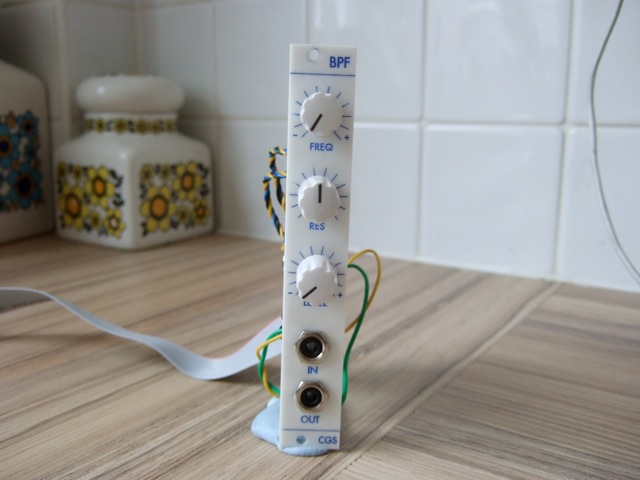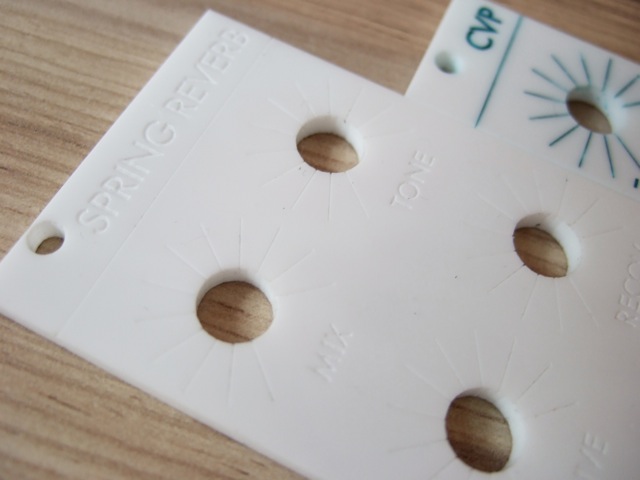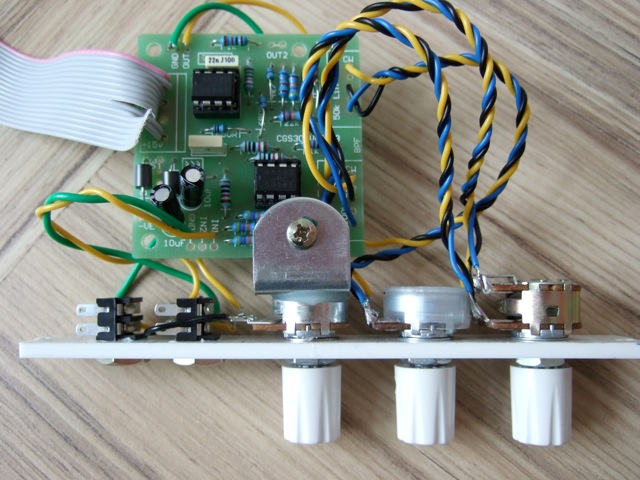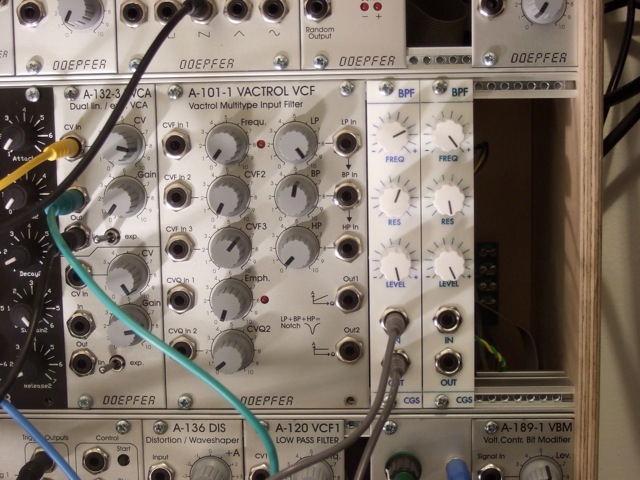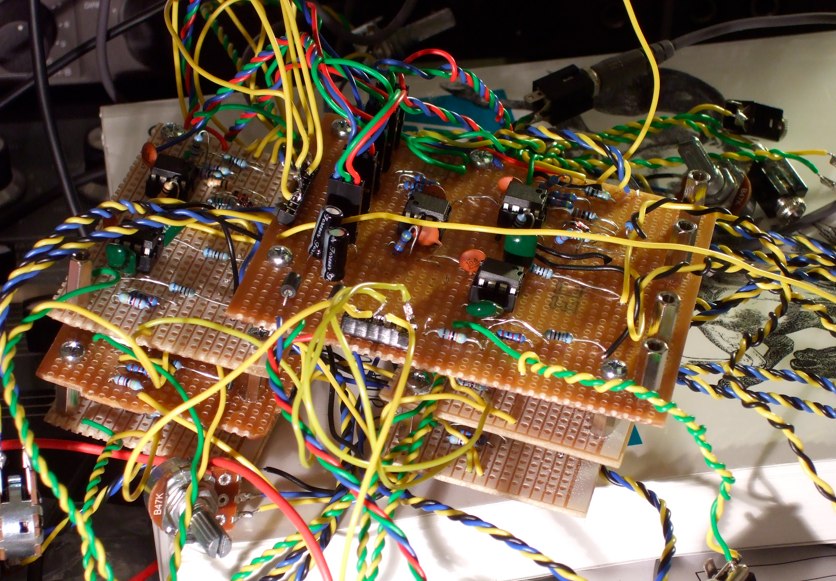Voltage controlling the CGS30/SH-5 bandpass filter
I’ve been having another go at voltage controlling the cutoff of a SH-5/CGS30 bandpass filter. This is my previous attempt, based on attenuating and offsetting the input control voltage to a reasonable range for the LED to light over:
This time I started out with a pair of 2SK30A-GR FETs, but the swept range was small and the sound became oddly distorted as the cutoff was pushed lower.
I gave up and went back to the homemade vactrol, this time with a diffused red LED. I rebuilt the circuit to offset and attenuate the CV signal, again based on Ken Stone’s joystick controller. I’ve managed to get a reasonable sort of range with this set-up, although the resistance range could be wider, and the response wasn’t particularly linear.
I was doing some testing, and just wanted to check the response against a known quantity. Here’s the Doepfer A-120 LPF fixed to self-oscillate at full resonance swept with the triangle from my MFB Dual LFO, peak frequencies graphed log-wise in Sonic Visualiser.
Which doesn’t quite look right, all wobbly when it should be a triangle with straight edges. Suspecting the filter, I connected the MFB LFO to one of my oscillators and got a similar result.
Trying a different modulation source, here’s the A-120 swept with the LFO in my MS20:
Which looks much better, proving that this particular MFB LFO is even wonkier than my teeth. The triangle is leaning slightly forwards, presumably because the MS20’s LFO shape control wasn’t quite centred.
Going back to the CGS30 bandpass, because it won’t self-oscillate here it is being fed with a one note looped pattern, set to high resonance and with the filter frequency swept with the MS20 LFO.
The stepping is presumably the filter picking out the harmonics in the square wave.
Flipping from a log display to a linear display, we get…
Which is pretty close to the MS20 LFO waveform. Maybe an anti-log LED driver might fix this.
Masatoshi Katsube has been here before. From his linear LED brightness driver circuit, I got this:
Imagine a couple of LDRs pressed up against the red LED in the right hand corner, with the wires of the two LDRs going to the places where the dual pot would be on the CGS30 circuit diagram.
I’m running off 14v because I’m running this circuit from the same PSU as the recreated System 100 innards on my desk. The 500K pot is for setting the offset of the input control voltage above 0V, which would be replaced by a fixed resistor in the final thing. Also the MS20 LFO is +/-2.5v, when modular LFOs tend to be +/-5v, so the voltage divider at the front of the positive op-amp input might need to change.
Inbetween the last measurements and the next time, the LFO shape got skewed even further, so I re-adjusted it to be as centred as I could. So we know where we are, here’s the DIY BPF swept by the MS20 LFO from the original circuit again:
And here’s the BPF driven from Masatoshi Katsube’s antilog circuit:
…which is pretty good. It starts to flatten out a little bit as the frequency reaches the top of its range at about 4.2KHz, but it’s not bad. The lowest it gets is about 90hz, but it should get better when the LED and LDRs are encased in some kind of black hole. This is what it sounds like with the resonance cranked up.
I wanted to see how the frequency range compared to the original SH-5, so I recorded sweeping the filter over noise by wobbly hand.
The SH-5 gets down to about 60hz and just over 10KHz at the top, so we’re not quite able to control over the full range with this set up. I’m using 5539 LDRs which are specified as having a resistance of 30K – 90K at 10 Lux, it might be better with 5537s which have a resistance of 16K – 50K at the same light level.
Some further fiddling is needed but this seems like a viable method for voltage controlling the SH-5 bandpass.









